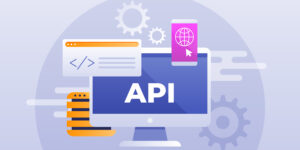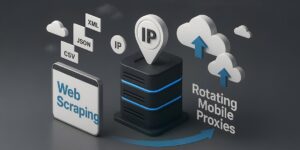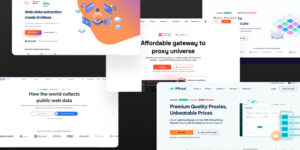
According to the Collins Dictionary, “If you scrape something from a surface, you remove it, especially by pulling a sharp object over the surface.” Now, while web scraping doesn’t work in quite the same way as physically scraping something from a surface, it’s not too dissimilar: it’s just that the surface represents the entire World Wide Web, the ‘something’ refers to the data it holds, and the sharp object can be substituted for a web scraping tool.
Sound straightforward enough? Web scraping is an increasingly widespread practice that enables users to extract data from websites — often multiple websites at a time — and convert it into a readable format for analysis. The data extracted could be anything from product prices to contact information for potential leads, making it a powerful tool for businesses looking to amplify their data analysis capabilities and boost productivity.
In this post, we examine the 6 primary benefits of web scraping for businesses — and there are no sharp objects required.
1. Market research
When a business is planning to launch a new product onto the market, a hit-and-hope approach is rarely conducive to its success: instead, it’s important to conduct exhaustive market research beforehand, helping to understand consumer demand, analyze current and emerging market trends, and assess the strategies of brands selling comparable products.
By scraping the web and extracting this data, businesses can pinpoint the unique selling point (USP) of their product and determine how to differentiate it from others in the market — whether that’s through leading-edge design, revolutionary features, or simply a market-beating price. All of this will help to ensure the product stands out among a competitive landscape.
Additionally, web scraping allows businesses to gain an understanding of consumer preferences and opinions by analyzing online discussions, reviews, and sentiments related to similar products. The data extracted can be used to identify gaps in the market and tailor the new product to meet the specific needs and expectations of consumers.
2. Price optimization
It’s estimated there are now around 26 million ecommerce websites operating worldwide, so it goes without saying that it’s an extremely (and increasingly) competitive landscape. Many factors can impact the success of an e-commerce store, of course — from SEO to security — but the price is often still the number one consideration for online consumers.
To that end, staying on top of market prices (and being aware of fluctuations) is essential to remaining competitive in the ecommerce marketplace. Fortunately, this is yet another area in which web scraping can be leveraged: for instance, by scraping data from competitor websites or online marketplaces, businesses can more accurately measure how prices are being set for similar products in their market.
Armed with this up-to-the-minute information, those businesses can make more informed decisions about their own pricing strategies, enabling them to set market-leading prices and maximize sales potential. Failure to stay on top of price fluctuations in the market may mean a business over- or underpricing its products, potentially leading to profit margins being squeezed or sales being lost to competitors.
3. Competitor analysis
The old adage that you should keep your friends close and your enemies closer certainly applies to the modern business landscape: in order for businesses to stay competitive — and more importantly, to grow — it’s essential for them to know their competitors almost as well as they know themselves.
If you’re launching a new startup venture, for example, you’ll need to understand the players already operating in your market so you can formulate your own strategy, while even an established business must continually be analyzing and responding to competitor activity to avoid being sidelined in a competitive market.
Through web scraping, you can extract website data from your competitors’ sites to stay abreast of their strategies, allowing you to learn, adapt, and spot opportunities to gain a competitive edge. In fact, you can gain insights into competitor products, prices, social media posts, advertisements, and you can even scrape search engines to see which keywords your competitors are ranking for.
4. Lead generation
For any business, lead generation is a continual and often resource-intensive process. But it’s also a fundamental one, since consistent acquisition is essential for growth. There are a number of ways to generate leads, of course — from content marketing to PPC advertising but web scraping can help to significantly streamline and speed up the process.
Web scraping can help identify potential leads from a wide range of sources — for example, businesses can access data from multiple websites, forums, and social media platforms. Recruiters can also use a jobs scraper to generate recruitment leads from various job boards, further broadening their reach. This broad reach helps companies cast a wider net, increasing the chances of discovering new leads and potential customers from various demographics and geographic locations.
However, the utilization of web scraping techniques for market research also comes into play here: by better understanding consumer needs and pain-points, businesses can create tailored marketing campaigns that resonate with potential clients. This more targeted approach increases the likelihood of converting leads into customers.
5. Sentiment analysis
Understanding consumer sentiment is increasingly key for modern businesses by measuring the attitudes, emotions and opinions expressed by consumers in relation to particular products, services or brands, businesses can proactively address consumer concerns, adapt to evolving demands, and tailor their marketing campaigns more effectively.
Web scraping can play an important role here, too: by scraping customer feedback and testimonials from websites — whether that’s competitor sites, online marketplaces, or third-party review platforms such as TrustRadius (primarily for software reviews) — you can assess consumer sentiment towards your product or brand, both positive and negative.
Analyzing this information can reveal crucial insights about customer satisfaction, brand reputation, and potential areas for improvement. By understanding the public’s perception of their brand, products, or services, businesses can make informed decisions, reacting quickly to negative feedback and staying tuned in to their customers’ needs and expectations.
6. Productivity enhancement
While the five areas we’ve already covered might be seen as direct advantages of web scraping, perhaps the biggest win is an indirect benefit it offers — by automating often time-consuming processes such as market research, price monitoring, and lead generation, a web scraper significantly cuts on down on the time spent manually collecting and collating this information.
Through various integrations, many web scraping tools enable ‘no-code’ scraping, meaning they’re relatively easy to set up your business and run even for someone with little or no programming experience. They’ll also download the extracted data into an easily-digested format such as a CSV, so that pretty much anyone can make sense of the information.
This simplicity and time-saving capacity can be a boon for businesses with stretched resources, enabling them to automate many aspects of data collection and eliminating several manual, menial tasks and processes. The upshot is that this allows them to focus on more complex, engaging, and impactful endeavors.
In summary, web scraping has multiple potential benefits for businesses, enabling them to build up a better understanding of their markets, generate leads, gain a competitive advantage, and maximize productivity to name a few. Leveraging this technology, businesses can extract and react to real-time data insights faster.






